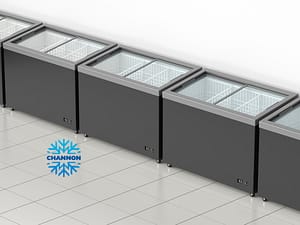Air travel presents unique challenges for individuals who rely on supplemental oxygen, making it essential to plan carefully before embarking on a journey. The reduced oxygen levels in airplane cabins, coupled with the confined space and lengthy periods of immobility, can exacerbate respiratory conditions. For those dependent on oxygen therapy, this environment can pose significant health risks if not properly managed.
How a Travel Oxygen Concentrator Can Make Air Travel Easier
A travel oxygen concentrator offers several advantages that make air travel more manageable for individuals requiring supplemental oxygen. One of the primary benefits is its portability. These devices are specifically designed to be lightweight and easy to carry, often coming with a travel case that fits conveniently in overhead compartments or under airplane seats. This portability ensures that you can move through the airport and board your flight without the burden of heavy, cumbersome equipment.
Understanding Airline Regulations for Travel Oxygen Concentrators
What Are the General Airline Policies on Travel Oxygen Concentrators?
Generally, airlines require that the travel oxygen concentrator be approved by the Federal Aviation Administration (FAA) or an equivalent authority in your country. This approval ensures that the device meets safety standards for use during flight. Additionally, airlines typically require that the concentrator be able to operate on battery power, as in-flight use of electrical outlets is often restricted. Passengers are usually required to bring enough batteries to power the device for the duration of the flight, plus an additional amount to cover any unexpected delays.
How to Ensure Your Travel Oxygen Concentrator Meets Airline Standards
To ensure that your travel oxygen concentrator meets airline standards, start by verifying that the device is FAA-approved or certified by the relevant aviation authority. This information is usually available in the user manual or on the manufacturer’s website. If you’re unsure, contact the manufacturer directly to confirm that your device complies with aviation regulations.
Preparing for Air Travel with a Travel Oxygen Concentrator
What Documents and Approvals Are Needed?
Before traveling with a travel oxygen concentrator, it’s crucial to gather the necessary documents and approvals to avoid any complications at the airport. The first document you will need is a letter from your doctor. This letter should confirm your need for oxygen therapy during the flight and detail the required oxygen flow rate. The letter should also state that you are fit to fly with a travel oxygen concentrator. Some airlines may provide a specific medical clearance form that your doctor will need to complete.
How to Pack and Transport Your Travel Oxygen Concentrator
Packing and transporting your travel oxygen concentrator requires careful planning to ensure the device remains protected and functional throughout your journey. Start by packing the concentrator in its dedicated carrying case, which is typically designed to cushion the device and protect it from bumps and jolts. If the case has room, include any necessary accessories such as extra batteries, charging cables, and adapters.
Navigating the Airport with a Travel Oxygen Concentrator
How to Get Through Airport Security with Your Travel Oxygen Concentrator
Navigating airport security with a travel oxygen concentrator can be a smooth process if you are prepared and understand what to expect. When you arrive at the security checkpoint, inform the Transportation Security Administration (TSA) officers or security personnel that you are carrying a travel oxygen concentrator. They are trained to handle medical equipment and will guide you through the screening process.
What Are the Best Practices for Using a Travel Oxygen Concentrator in the Airport?
Once you’ve passed through security, there are several best practices to follow when using your travel oxygen concentrator in the airport. First, find a comfortable place to sit where you can easily access power outlets if needed. Some airports offer charging stations or designated areas for passengers with medical needs, which can be ideal for recharging your concentrator’s batteries before the flight.
Using a Travel Oxygen Concentrator During the Flight
How to Set Up and Operate Your Travel Oxygen Concentrator on the Plane
Once you’re on board and seated, it’s important to set up your travel oxygen concentrator correctly to ensure a comfortable and safe flight. Begin by securing the device either under the seat in front of you or in a position where it won’t obstruct the aisle or emergency exits. Many travel oxygen concentrators are designed to be compact and portable, fitting easily within the space allowed for carry-on luggage.
What to Do If You Encounter Issues with Your Travel Oxygen Concentrator Mid-Flight
For battery-related concerns, switch to a fresh battery as soon as you notice a low battery warning. This is why it’s crucial to carry extra batteries on board. If you run into more complex issues, such as the device not powering on or a complete loss of oxygen flow, inform the flight attendants immediately. They can provide assistance and help you manage the situation while ensuring that your health and safety are prioritized. Health Care Australia advises travelers to familiarize themselves with the basic troubleshooting steps for their specific travel oxygen concentrator before the flight to avoid potential problems during travel.
Health and Safety Considerations for Air Travel
How to Stay Comfortable and Healthy During the Flight
Maintaining comfort and health during a flight while using a travel oxygen concentrator requires a bit of preparation and awareness. Staying hydrated is key, as the dry air in airplane cabins can lead to dehydration, which can exacerbate respiratory issues. Drink plenty of water throughout the flight, but avoid excessive caffeine or alcohol, as these can have dehydrating effects.
What Are the Emergency Protocols for Health Issues on a Plane?
Airlines are equipped with emergency medical kits, and many have protocols in place to provide supplemental oxygen if necessary. The flight crew may contact ground medical support to guide them through the situation or, in severe cases, make an emergency landing to ensure you receive the necessary care. Knowing that such protocols exist can provide peace of mind when traveling with a travel oxygen concentrator.
Health Care Australia Support for Travelers
How Health Care Australia Can Assist with Travel Preparations
Health Care Australia offers comprehensive support for individuals traveling with medical needs, including those who require a travel oxygen concentrator. From providing detailed information on how to use and maintain your device to offering advice on airline regulations and travel preparation, Health Care Australia ensures that you are well-prepared for your journey.
Why Australian Health Supplies Are Essential for Safe Travel
Traveling with reliable and high-quality medical supplies is essential for ensuring a safe and stress-free journey. Australian health supplies are known for their stringent quality standards, making them a trusted choice for travelers who require medical equipment like travel oxygen concentrators.
After the Flight: Managing Your Travel Oxygen Concentrator
What to Do Immediately After Landing
As you make your way to baggage claim or transportation, keep your travel oxygen concentrator securely stored in its case to protect it from any bumps or knocks. If you’ve packed additional batteries or accessories in your checked luggage, retrieve them as soon as possible to ensure you have all the necessary supplies on hand.
How to Maintain Your Travel Oxygen Concentrator Post-Flight
By taking these steps, you can ensure that your travel oxygen concentrator remains reliable and ready for use throughout your trip. Health Care Australia provides additional resources and support to help you manage your medical equipment while traveling, ensuring that your health needs are always met, no matter where you are.









